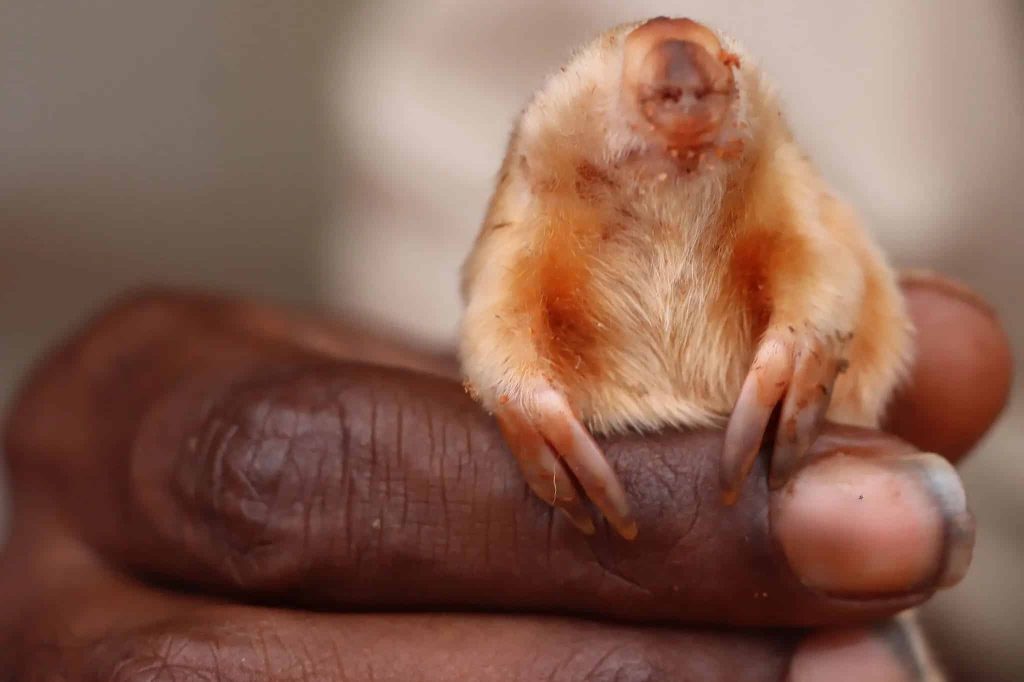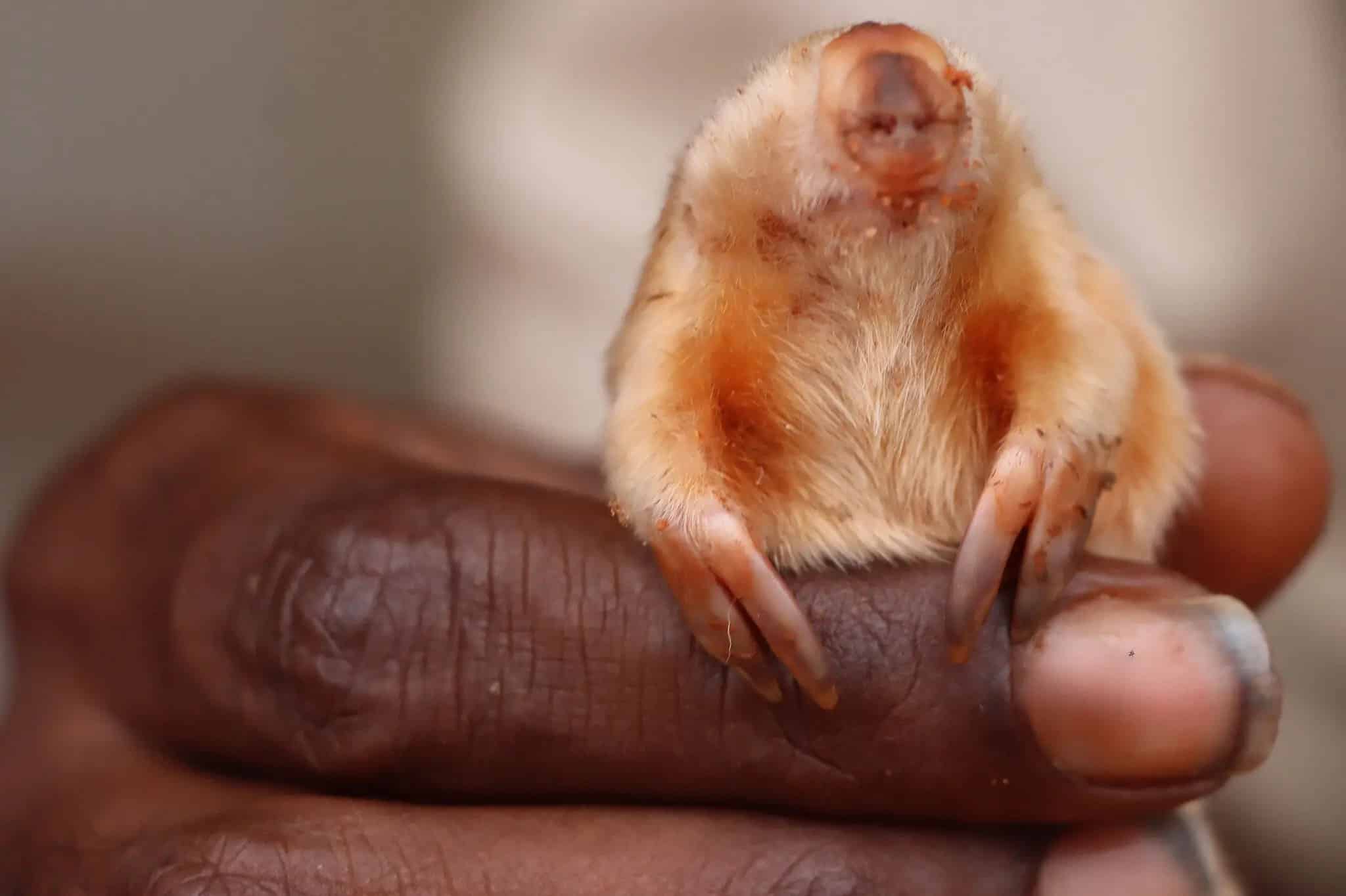
The small and cute marsupial mole is one of the most unique and hard-to-find mammals. It lives only in the deserts of Australia. Not many people go this far into the outback. Combined with the creature’s mostly underground home, this makes sightings of the northern marsupial mole (Notoryctes caurinus) very rare.
However, a recent journey by Aboriginal rangers has returned with some amazing photos of this small, rare mammal.
A Mysterious Creature Emerges
Unlike the usual mole, marsupial moles have a golden to cream-colored coat and no visible eyes and ears. They are very small, easily fitting in the palm of your hand, and weigh only around 40 to 60 grams — about as much as a golf ball. Despite their delicate look, these moles have very strong forearms and claws, allowing them to quickly dig in the sand. In fact, they’re so well-adjusted to this lifestyle they almost ‘swim’ deep in the sand dunes.
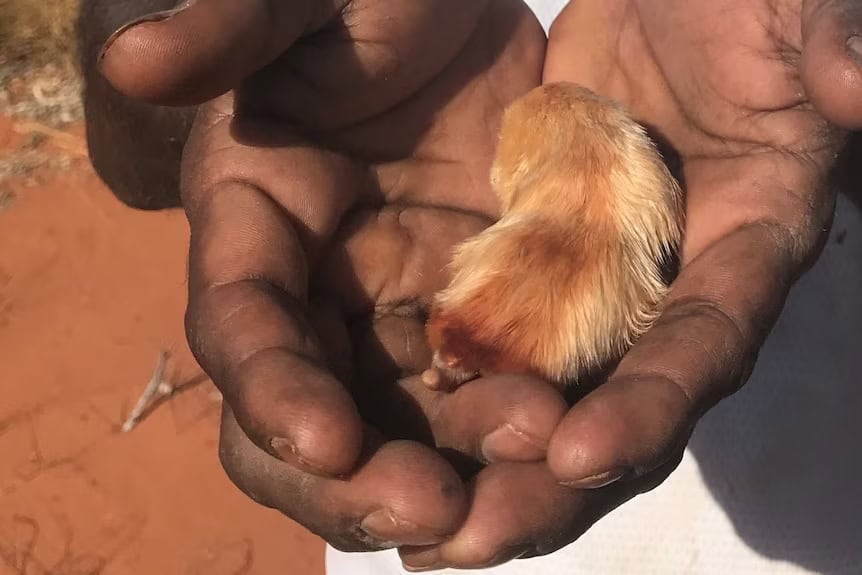
As marsupials, these moles have a pouch where their young develop, but this unique pouch opens rearward to prevent it from filling with sand while digging. Due to their secretive nature and the challenging habitat in which they live, though, we still have much to learn. The reproductive habits of these moles remain poorly understood.
The photos taken by rangers in the Kiwirrkurra Indigenous Protected Area offer a rare look into the life of this hidden creature, which spends most of its time beneath the desert sands.
“Some people’s first thought was, ‘Are these photos an April Fools’ Day joke?'” desert wildlife expert Gareth Catt told ABC.
However, these images are very real, providing valuable insights into the little-known species — which the Aboriginals call the ‘kakarratul’ — thriving in one of the most inhospitable environments on Earth.
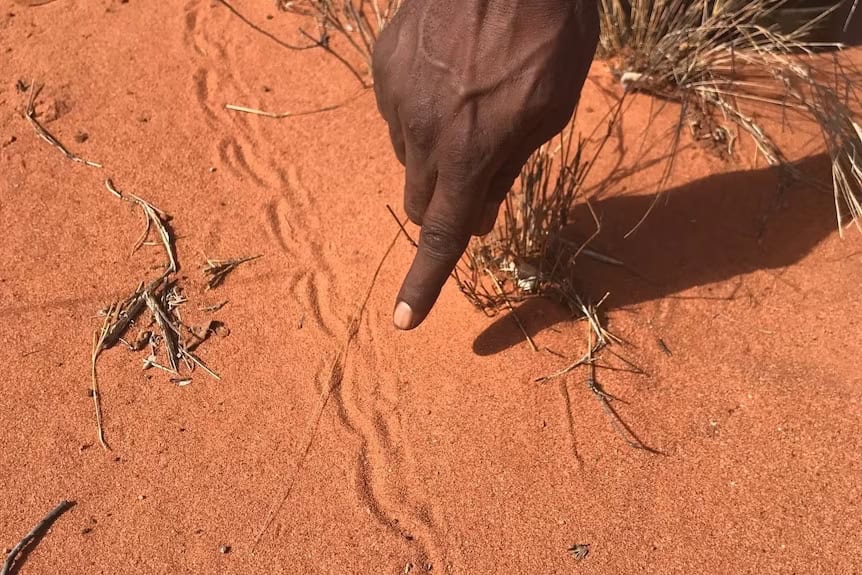
Adaptations for Survival
Local rangers, known as the Kanyirninpa Jukurrpa (KJ) Rangers, play a critical role in monitoring these animals. The sighting at Uluru — a massive sandstone monolith in the heart of the Northern Territory’s arid “Red Centre” — marks only the second time in six months that this reclusive species has been observed in the region.
“This is the hardest of all the animals to find,” said Denzel Hunter, an Indigenous ranger who works to survey and conserve wildlife in the lands of the Nyangumarta people. “Every time we go out looking for northern marsupial moles, we find evidence that they’re there. But I’ve never seen one.”
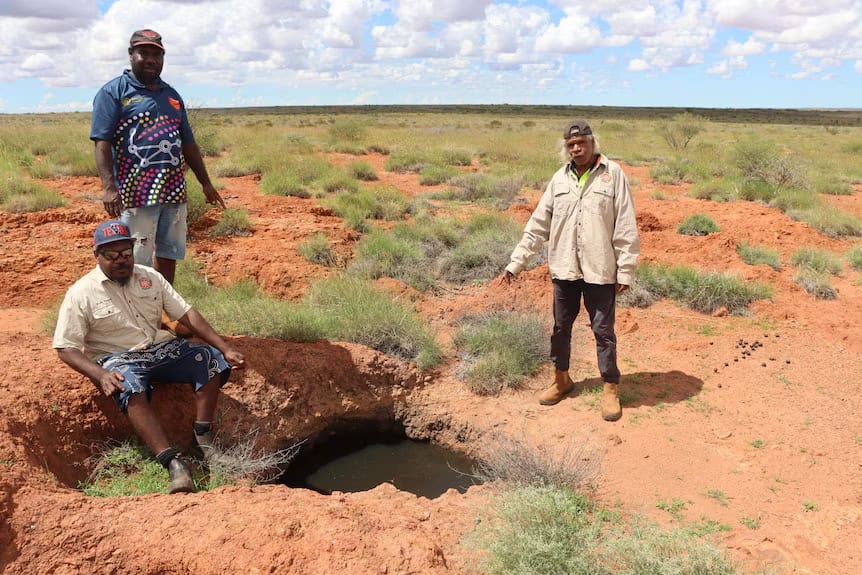
The conservation of the marsupial mole and other desert species is mostly managed by Indigenous ranger groups. There are about 60 desert ranger groups overseeing Australia’s protected natural areas. These teams are crucial for protecting Australia’s wildlife, especially as climate change impacts the delicate balance of desert ecosystems, altering rainfall patterns and increasing temperatures.
The amazing photos of the marsupial moles are now inspiring a new generation of rangers — a reminder of the mysteries that still exist in the natural world and the ongoing need to understand and protect it.
“It caused a bit of excitement,” Zan King, executive director of the Kanyirninpa Jukurrpa Martu rangers, told ABC.
“They are all keen to get back home to tell their families and show the photos to the young kids, because we’ve got lots of junior rangers who are looking forward to being rangers when they grow up.”





